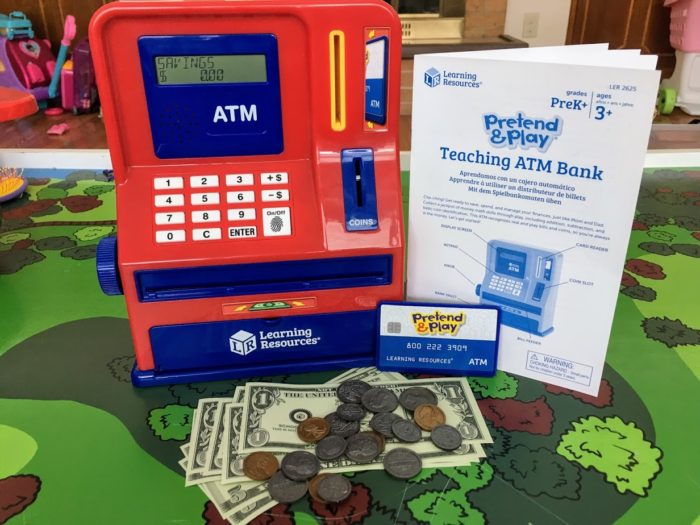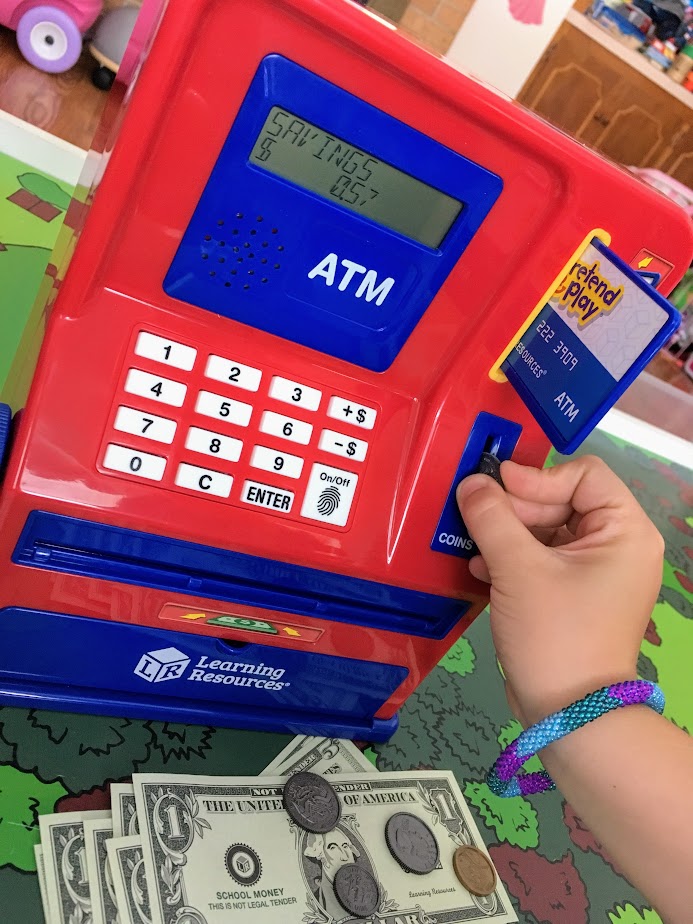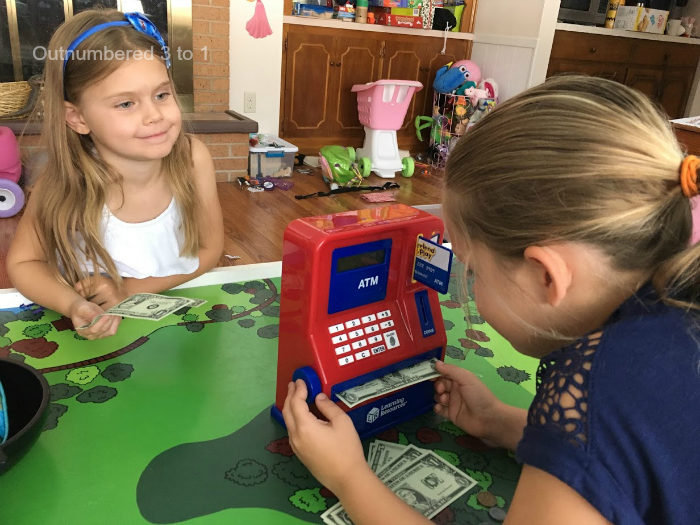I received a?Pretend & Play Teaching ATM Bank for this review/feature. Opinions expressed are my own.
Now that my girls are 5 and 8 they have really started to get interested in the value of money. The money they get in cards from the grandparents has begun to have meaning. A great way to teach them more about money is with toys that offer up educational play directly targeted to money. The Pretend & Play Teaching ATM Bank from Learning Resources is an EXCELLENT way to have kids learn all about money through both coins and bills in a way that is fun!

For ages 3+ children will learn money skills while they withdraw, deposit, and save money with this electronic ATM bank. Use with the included play money or your own real money. Bank will recognize play and real coins. Also has a mechanical bill feeder. It makes noise like a real ATM and my 8 year old especially likes to use her math skills when adding or taking money out of the ATM.

Product Features + Benefits:??
-
Real, working electronic ATM bank with large LCD screen?
-
Helps children practice early math and money skills through pretend play?
-
Features coin recognition, a mechanical bill feeder, and a pretend thumbprint sensor?
-
Includes play money and ATM card?

Here are some tips and tricks from Learning Resources and Erica Sandberg for teaching kids about money through play!
-
Play the, ?What do you think it costs?? game. Ask your child to guess the price of everyday items. It’s a fun way to teach value.
-
Send older kids on a price-war scavenger hunt. When at the grocery store, have them find cereal, bread, milk, or other foodstuff with the best price. Then discuss whether it really is or isn?t a good deal.
-
Reward hard work. When you’re with your child, buy from another kid’s lemonade stand and give a buck to a busker. Provide your child with work-for-pay opportunities – make sure they?re challenging and expect a job well done.
-
Explain how to use an ATM. You?re there anyway, so explain what’s going on. You deposited money that the bank is holding for you, this is how to swipe a card, deposit checks, etc.
-
Save for a goal together. Choose something your child or family wants to do and then make a big production out of contributions. Even a toddler throwing a dime into the pot is a moment to celebrate.
-
Treat your things well and teach your child to do the same. Explain that you work hard to purchase the items you all enjoy. Your time and effort is valuable.
-
Encourage entrepreneurship. Kids can sell their unwanted toys or clothes online or in the driveway (with your help, when they?re young), walk dogs, or come up with their own money-making venture. Watch Shark Tank together for ideas and a healthy dose of reality.
-
Talk about financial values. Be open about what you think is right and wrong about money but be respectful of your child’s emerging perspective.
-
Teach your child to pay – early. Even a kindergartner can buy a drink at a cafe. On days when no one else is in line, let him or her order and hand the money over. Explain how to count the change and drop the right gratuity in the tip jar. This process should not be a mystery by the age of ten.
-
Give a tax lesson. When you get a store receipt, show your child the line item for sales tax and tell him where that money goes. Explain that some of ?what you earn goes to the federal government, too. Roads, fire stations, defense, and schools are financed this way.

I am already a HUGE fan of Learning Resources as they are a leading global manufacturer of innovative, hands-on educational products trusted by teachers and parents and loved by children. We have several Learning Resources toys that still get played with years later. You can purchase the Pretend & Play Teaching ATM Bank on Amazon. Both my girls already have “big” plans for their savings and they are super excited to do chores around the house to get started.
Connect: You can connect with Learning Resources on Facebook, Instagram, YouTube, Pinterest and @LearningHandsOn on Twitter.